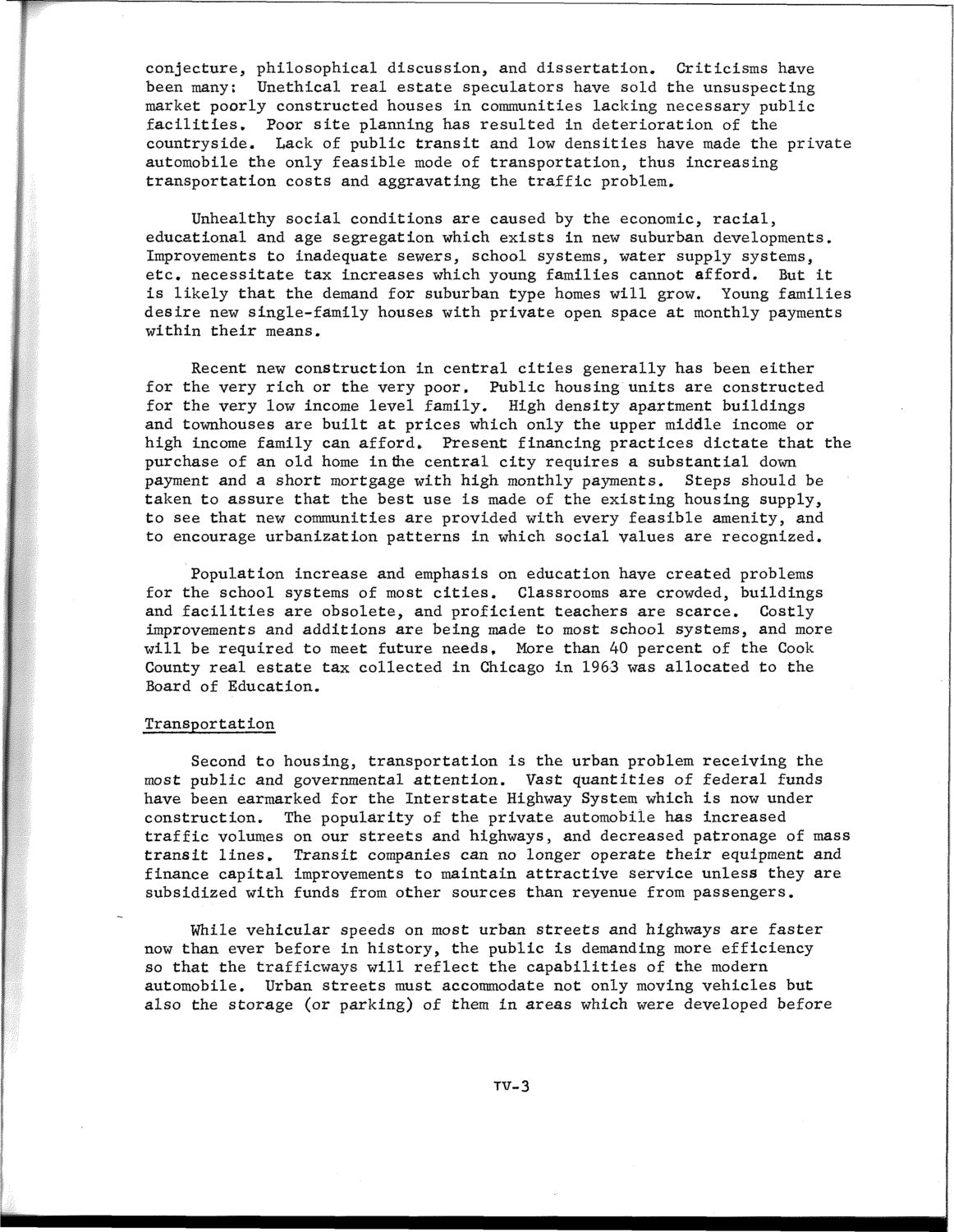| |
| |
Caption: SWE - Proceedings of the First International Conference of Women Engineers and Scientists
This is a reduced-resolution page image for fast online browsing.

EXTRACTED TEXT FROM PAGE:
conjecture, philosophical discussion, and dissertation. Criticisms have been many: Unethical real estate speculators have sold the unsuspecting market poorly constructed houses in communities lacking necessary public facilities. Poor site planning has resulted in deterioration of the countryside. Lack of public transit and low densities have made the private automobile the only feasible mode of transportation, thus increasing transportation costs and aggravating the traffic problem. Unhealthy social conditions are caused by the economic, racial, educational and age segregation which exists in new suburban developments. Improvements to inadequate sewers, school systems, water supply systems, etc. necessitate tax increases which young families cannot afford. But it is likely that the demand for suburban type homes will grow. Young families desire new single-family houses with private open space at monthly payments within their means. Recent new construction in central cities generally has been either for the very rich or the very poor, Public housing units are constructed for the very low income level family. High density apartment buildings and townhouses are built at prices which only the upper middle income or high income family can afford. Present financing practices dictate that the purchase of an old home in Hie central city requires a substantial down payment and a short mortgage with high monthly payments. Steps should be taken to assure that the best use is made of the existing housing supply, to see that new communities are provided with every feasible amenity, and to encourage urbanization patterns in which social values are recognized. Population increase and emphasis on education have created problems for the school systems of most cities. Classrooms are crowded, buildings and facilities are obsolete, and proficient teachers are scarce. Costly improvements and additions are being made to most school systems, and more will be required to meet future needs. More than 40 percent of the Cook County real estate tax collected in Chicago in 1963 was allocated to the Board of Education. Transportation Second to housing, transportation is the urban problem receiving the most public and governmental attention. Vast quantities of federal funds have been earmarked for the Interstate Highway System which is now under construction. The popularity of the private automobile has increased traffic volumes on our streets and highways, and decreased patronage of mass transit lines. Transit companies can no longer operate their equipment and finance capital improvements to maintain attractive service unless they are subsidized with funds from other sources than revenue from passengers. While vehicular speeds on most urban streets and highways are faster now than ever before in history, the public is demanding more efficiency so that the trafficways will reflect the capabilities of the modern automobile. Urban streets must accommodate not only moving vehicles but also the storage (or parking) of them in areas which were developed before TV-3
| |